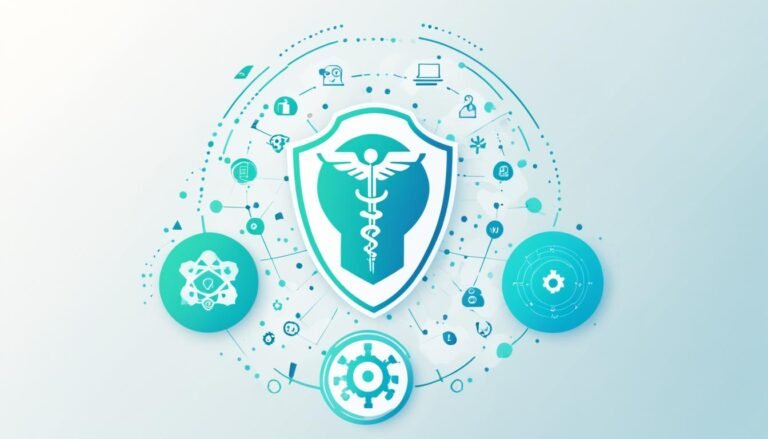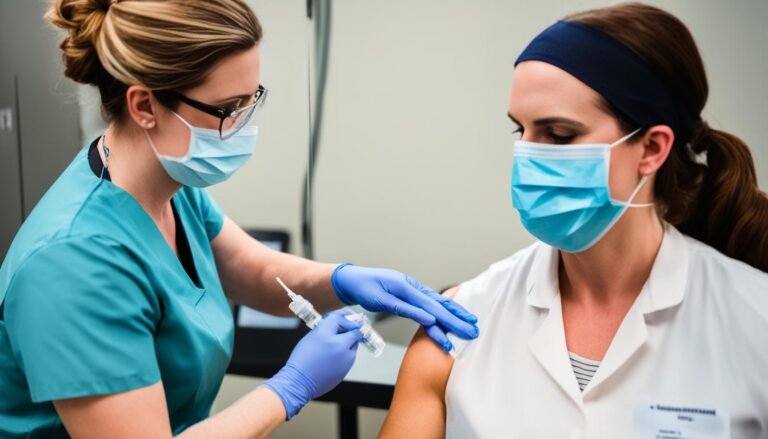Patient Data: Navigating the Balance Between Utility and Privacy
Patient data is like a delicate balancing act, where the utility of information must be carefully weighed against the need to protect individual privacy. In the realm of healthcare, this equilibrium is crucial for informed decision-making and improving patient outcomes.
However, ethical considerations, legal frameworks, and emerging technologies must all be harnessed to ensure the anonymization and security of data.
This article explores the complex landscape of patient data, shedding light on strategies and collaborative approaches to navigate the delicate balance between utility and privacy.
Key Takeaways
- Patient data is crucial for informing clinical decision-making and personalized treatment plans.
- Ethical considerations, such as informed consent, data anonymization, and robust data security measures, are necessary when utilizing patient data.
- Balancing data utility with patient privacy rights requires implementing ethical guidelines and privacy safeguards.
- Compliance with legal frameworks and regulations, such as GDPR and HIPAA, is essential for protecting patient data.
The Importance of Patient Data in Healthcare
Patient data plays a vital role in healthcare by informing clinical decision-making, enabling personalized treatment plans, and improving overall patient outcomes.
The value of patient data lies in its ability to provide healthcare professionals with crucial information that can guide their decisions and actions. In today’s healthcare landscape, data-driven healthcare has become increasingly important as advancements in technology have allowed for the collection and analysis of vast amounts of patient information.
By analyzing patient data, healthcare providers can gain insights into a patient’s medical history, current conditions, and potential risk factors. This information helps clinicians make more accurate diagnoses, choose appropriate treatment options, and develop personalized care plans tailored to individual patients. Moreover, patient data allows healthcare professionals to monitor the effectiveness of treatments and interventions, enabling them to make timely adjustments if necessary.
Data-driven healthcare also contributes to improving overall patient outcomes. By identifying patterns and trends in large datasets, healthcare systems can identify best practices and evidence-based guidelines that optimize patient care. This approach ensures that patients receive the most effective and efficient treatments, leading to improved patient outcomes and reduced healthcare costs.
Ethical Considerations in Utilizing Patient Data
The ethical considerations in utilizing patient data depend on the principles of privacy and utility. Healthcare organizations have a responsibility to ensure that patient data is used in a way that respects their privacy rights and maintains their trust. At the same time, there is a need to leverage patient data to improve healthcare outcomes and advance medical research. Striking the right balance between utility and privacy is essential to navigate the ethical implications of utilizing patient data.
Here are four key points to consider when addressing the ethical implications of utilizing patient data:
-
Informed Consent: Patients should be fully informed about how their data will be used and have the right to give or withhold their consent. It is crucial to establish clear guidelines for obtaining informed consent and ensure transparency in data governance practices.
-
Data Anonymization: Patient data should be de-identified or anonymized whenever possible to protect their privacy. This process removes personally identifiable information, reducing the risk of re-identification and unauthorized access.
-
Data Security: Robust data governance measures must be in place to safeguard patient data from breaches and unauthorized access. Encryption, access controls, and regular security audits are essential to protect patient privacy.
-
Data Sharing and Collaboration: Collaboration between healthcare organizations and researchers can lead to valuable insights and advancements in healthcare. However, it is crucial to establish clear guidelines and agreements to ensure that patient data is shared responsibly and securely.
Balancing Data Utility With Patient Privacy Rights
As the use of patient data for analysis and research becomes more prevalent, there is an inherent tension between the utility of the data and the privacy rights of patients.
Ethical considerations arise when it comes to sharing and analyzing data, as the balance between privacy and data utility must be carefully navigated.
It is crucial to strike a balance that respects patient privacy rights while still allowing for meaningful data analysis that can improve patient care and outcomes.
Ethical Data Sharing
To ensure the ethical sharing of data while maintaining the balance between data utility and patient privacy rights, it is crucial to establish clear guidelines and protocols.
Ethical data governance plays a vital role in overseeing the responsible use and sharing of patient data. This involves the establishment of frameworks and principles that guide the collection, storage, access, and dissemination of data.
Additionally, data sharing agreements should be put in place to outline the terms and conditions under which data can be shared, ensuring that patient privacy rights are respected and protected. These agreements should clearly define the purpose of data sharing, specify the types of data that can be shared, and establish mechanisms for obtaining patient consent and ensuring data security.
Privacy Vs. Data Analysis
Balancing the utility of data analysis with the rights to patient privacy requires careful consideration of ethical guidelines and robust privacy safeguards.
The increasing availability of vast amounts of patient data has opened up new possibilities for medical research and improved healthcare outcomes. However, this also raises concerns about the privacy of individuals and the potential misuse of their sensitive information.
Striking the right balance between data utility and privacy is crucial to ensure that data analysis benefits society without compromising individual rights. To achieve this, organizations must implement stringent data privacy measures, such as de-identification and encryption, to protect patient information.
Additionally, strict access controls and transparent governance frameworks should be established to regulate the use of data for analysis, ensuring that it is conducted ethically and with the utmost respect for patient privacy.
Legal Frameworks and Regulations for Protecting Patient Data
The implementation of robust legal frameworks and regulations is crucial for ensuring the protection of patient data. In today’s digital age, where healthcare organizations are handling vast amounts of sensitive information, it is imperative to have clear guidelines and regulations in place to safeguard patient privacy and maintain trust in the healthcare system.
Here are four key points to consider regarding legal frameworks and regulations for protecting patient data:
-
Legal challenges: One of the major challenges in protecting patient data is staying up-to-date with evolving legal landscapes. Healthcare organizations must navigate complex data protection laws, such as the General Data Protection Regulation (GDPR) in the European Union, the Health Insurance Portability and Accountability Act (HIPAA) in the United States, and other country-specific regulations. Compliance with these laws is essential to avoid legal repercussions and potential breaches of patient privacy.
-
International standards: Establishing international standards for protecting patient data is essential in today’s interconnected world. Collaboration between countries can help create a unified approach to data protection, ensuring consistency and cross-border data transfers while maintaining patient privacy.
-
Data breach reporting and notification: Legal frameworks should require healthcare organizations to promptly report any data breaches and notify affected individuals. This enables patients to take necessary precautions and safeguards their rights to be informed about potential risks to their privacy.
-
Enforcement mechanisms: Effective legal frameworks must include enforcement mechanisms to hold healthcare organizations accountable for any violations. Penalties and fines for non-compliance can act as a deterrent and encourage organizations to prioritize patient data protection.
Strategies for Ensuring Data Anonymization and De-identification
While data anonymization and de-identification are crucial for protecting patient privacy, implementing effective strategies is essential to ensure the complete removal of personally identifiable information.
One strategy for ensuring data anonymization is through data encryption. Data encryption involves transforming the data into an unreadable format using cryptographic algorithms. This ensures that even if unauthorized individuals gain access to the data, they will not be able to decipher the information without the encryption key.
Another strategy is data pseudonymization, which involves replacing direct identifiers such as names and social security numbers with pseudonyms. Pseudonyms are unique and random identifiers that cannot be directly linked to an individual’s identity. This technique allows for the analysis of data while minimizing the risk of re-identification.
Additionally, implementing strong access controls, such as restricting the number of individuals who can access the data and implementing user authentication protocols, can further enhance data anonymization and de-identification efforts.
The Role of Consent in Patient Data Usage
The role of consent in patient data usage is a crucial aspect to consider when navigating the balance between utility and privacy.
Explicit consent requirements ensure that individuals actively give permission for their data to be used, providing a transparent and accountable process.
Implied consent implications arise when individuals may not explicitly provide consent but engage in actions that imply their agreement, raising questions about the adequacy of implied consent in protecting patient privacy.
Informed consent considerations require healthcare providers to provide detailed information about how patient data will be used, allowing individuals to make informed decisions about their data privacy.
Explicit Consent Requirements
In order to ensure transparency and respect for individual privacy rights, explicit consent plays a crucial role in governing the usage of patient data. Patients should have control over how their data is used and shared, and explicit consent provides them with the power to make informed decisions regarding their personal information.
The following points highlight the importance of explicit consent in patient data usage:
-
Informed Decision-Making: Explicit consent requires patients to be fully informed about the purpose, scope, and potential risks associated with the use of their data. This empowers them to make informed decisions about the disclosure and use of their personal information.
-
Privacy Protection: Explicit consent ensures that patients have the ability to exercise their right to privacy by giving or withholding consent for the use of their data. This helps protect sensitive medical information from unauthorized access or misuse.
-
Trust and Confidence: By granting explicit consent, patients can have confidence that their data will only be used for the specific purposes they have approved. This fosters trust between patients and healthcare providers, facilitating a mutually beneficial relationship.
-
Accountability and Compliance: Explicit consent requirements promote accountability by holding healthcare organizations responsible for obtaining and documenting patients’ consent. This helps ensure compliance with legal and ethical obligations, promoting a responsible and ethical approach to patient data usage.
Implied Consent Implications
With the emergence of digital health technologies, implied consent has become a significant factor in determining the extent to which patient data can be used and shared.
However, this concept presents several challenges when it comes to ensuring patient autonomy and privacy. Implied consent assumes that patients have given their permission for their data to be used based on their actions or behaviors, rather than explicit verbal or written consent.
While this approach may streamline the process of data sharing and usage, it raises concerns about whether patients fully understand the implications of their actions. It is crucial to strike a balance between the utility of patient data for research and healthcare purposes and the protection of patient autonomy and privacy.
Clear guidelines and transparency in the use of implied consent are necessary to address these challenges effectively.
Informed Consent Considerations?
Considering the ethical implications surrounding patient data usage, understanding the role of informed consent is crucial in balancing utility and privacy. Informed consent is a process through which individuals are provided with relevant information about their participation in a study or treatment, enabling them to make an autonomous decision.
However, there are several challenges associated with obtaining informed consent in the context of patient data usage:
-
Complexity: Patient data can be complex and difficult for individuals to fully comprehend, making it challenging to provide informed consent.
-
Privacy concerns: Patients may be hesitant to share their data due to concerns about privacy and potential misuse.
-
Opt-out options: Providing clear opt-out options is essential to respect patient autonomy and ensure their data is used only with their explicit consent.
-
Continuous consent: As patient data usage evolves over time, obtaining ongoing consent is crucial to ensure that individuals remain informed and in control of their data.
Navigating these challenges requires a delicate balance between safeguarding patient autonomy and utilizing patient data for the greater good of healthcare research and innovation.
Building Trust and Transparency in Data Sharing Practices
One approach to building trust and transparency in data sharing practices is to establish clear guidelines and protocols for data collection, storage, and usage. By doing so, organizations can address privacy concerns and demonstrate their commitment to protecting patient data. Transparency is crucial in gaining patients’ trust and ensuring that they understand how their data will be used.
To further enhance trust and transparency, organizations can also implement the following practices:
-
Consent Management: Provide patients with clear and easily understandable consent forms that outline the purpose of data collection, who will have access to the data, and how long it will be retained. This empowers patients to make informed decisions about sharing their data.
-
Anonymization and De-identification: Implement robust techniques to ensure that patient data is properly anonymized and de-identified before sharing. This helps protect patient privacy while still allowing for valuable data analysis.
-
Data Sharing Agreements: Establish formal agreements with third-party organizations that specify the terms and conditions of data sharing. These agreements should include provisions for data security, confidentiality, and compliance with privacy regulations.
By adopting these practices, organizations can build trust with patients and demonstrate their commitment to responsible data sharing. This will ultimately lead to a more secure and ethical use of patient data for research and healthcare advancements.
| Practice | Description | Benefits |
|---|---|---|
| Consent Management | Clear and understandable consent forms that outline data usage and access | Informed patient decision-making and trust-building |
| Anonymization and De-identification | Techniques to protect privacy while allowing for data analysis | Balancing privacy concerns with data utility |
| Data Sharing Agreements | Formal agreements with third parties specifying terms and conditions of data sharing | Ensuring data security, confidentiality, and compliance with privacy regulations |
Table 1: Practices for Building Trust and Transparency in Data Sharing
Emerging Technologies for Secure and Private Data Storage
Several emerging technologies offer secure and private data storage solutions. As the importance of protecting sensitive patient data continues to grow, these technologies provide a way to safeguard information while still allowing for efficient access and sharing.
Here are four key emerging technologies for secure storage:
-
Blockchain: Known for its use in cryptocurrencies, blockchain technology can also be applied to healthcare data storage. It ensures data integrity and security through decentralized networks and encryption, making it difficult for unauthorized access or tampering.
-
Homomorphic Encryption: This technology allows for computations to be performed on encrypted data without decrypting it. It enables secure data processing while maintaining privacy, as the data remains encrypted throughout the entire process.
-
Differential Privacy: Differential privacy adds noise to the data to protect individual information while still allowing for useful analysis. It provides a balance between privacy and data utility, allowing researchers to gain insights from aggregated data without compromising patient confidentiality.
-
Secure Multiparty Computation: This technology enables multiple parties to jointly compute a result without revealing their individual inputs. It ensures that sensitive data remains private, even during collaborative analysis or research.
Mitigating the Risks of Data Breaches and Cyberattacks
Mitigating the risks of data breaches and cyberattacks requires implementing robust security measures and proactive monitoring systems. Safeguarding patient information is of utmost importance in the healthcare industry, where sensitive data is constantly being exchanged and stored.
To effectively mitigate the risk of data breaches, healthcare organizations must prioritize the implementation of strong security protocols. This includes encrypting patient data, establishing secure access controls, and regularly updating security software. Additionally, organizations should conduct regular risk assessments and vulnerability scans to identify and address potential weaknesses in their systems.
Proactive monitoring systems are crucial in detecting and responding to cyber threats promptly. These systems can include intrusion detection and prevention systems, security information and event management tools, and real-time threat intelligence feeds. By continuously monitoring network traffic and system logs, healthcare organizations can quickly identify any suspicious activities and take immediate action to prevent data breaches.
Employee training and awareness programs are also essential in mitigating data breaches. Staff members should be educated on best practices for handling patient information, such as using strong passwords, avoiding phishing scams, and properly disposing of sensitive documents.
Collaborative Approaches to Maximizing Data Utility While Safeguarding Privacy
Our organization can maximize the utility of patient data while safeguarding privacy through collaborative approaches that prioritize data sharing agreements and secure data handling protocols. By adopting these collaborative approaches, we can ensure that patient data is used effectively for research purposes while upholding the highest standards of privacy protection.
To achieve this, we must focus on the following key aspects:
-
Establishing data governance frameworks: Collaborative research requires clear guidelines on data ownership, access, and usage. Developing robust data governance frameworks ensures that all stakeholders understand their roles and responsibilities in handling patient data.
-
Implementing data sharing agreements: Collaborative research often involves sharing data across multiple organizations. Data sharing agreements should be established to define the terms and conditions of data access, use, and transfer. These agreements should include provisions for privacy protection, data security, and compliance with relevant regulations.
-
Adopting secure data handling protocols: Data security is crucial in collaborative research. Implementing secure data handling protocols, such as encryption, access controls, and anonymization techniques, helps protect patient privacy and prevent unauthorized access or breaches.
-
Promoting transparency and accountability: Open communication and transparency among all stakeholders are essential for maintaining trust in collaborative research efforts. Regular audits, monitoring, and reporting mechanisms should be in place to ensure compliance with data governance frameworks and data sharing agreements.
Conclusion
In conclusion, navigating the balance between data utility and patient privacy is a complex task in healthcare. Ethical considerations, legal frameworks, and robust strategies for data anonymization are essential for protecting patient data.
Building trust and transparency, along with emerging technologies for secure storage, can help safeguard sensitive information. However, the risks of data breaches and cyberattacks persist, emphasizing the need for collaborative approaches to maximize data utility while ensuring privacy.
A staggering statistic reveals that healthcare data breaches cost the industry an estimated $4 billion annually, highlighting the significance of addressing this issue effectively.





